September 29th, 2025
We Gave Our AI Full Control of $1,000 in Google Ads
By Zach Perkel · 5 min read
What We Did
Last week we did something that would probably make your marketing team cry: We gave an AI Agent (Julius, which already supports Claude 4.5 Sonnet) complete control over a $1,000 single day Google Search Ads campaign. It didn't have to get any approval, and it had no safety net. Julius could do anything (pause ads, adjust bids, reallocate spend, make new keywords). We let it literally do whatever it decided was best.
Setting this up took only a few minutes. I've never ran a Google Search Ads campaign before nor do I know a single thing about it.
So, how did Julius do with $1,000? Let's cut to the chase. If you keep reading after that, you'll figure out how you can also let Julius run an ad campaign for your company, and observe it along the way.
How Julius Performed
Julius took that in stride. It made the decisions to allocate over 90% of spend into a peak window (between 3-5PM).
In all fairness, it came at the cost of extra spend per click: it generated clicks at roughly twice the cost of our top performing campaign. But Julius showed the ability to make a bold decision and experiment. Given more days, Julius could perform multiple of these, review learnings, and optimize going forward.
Hours 0-10: Explored, analyzed, got approval for keywords.Hour 11: Keywords approved, first click, system identifies what is workingHours 12-14: Gradual scaled up budgetHours 15-16: Doubles down on winners, exhausted rest of daily budget in peak window (3-5 PM PST)Hours 17-23: Spend was exhausted
Below is a graph Julius itself made to visualize this strategy.
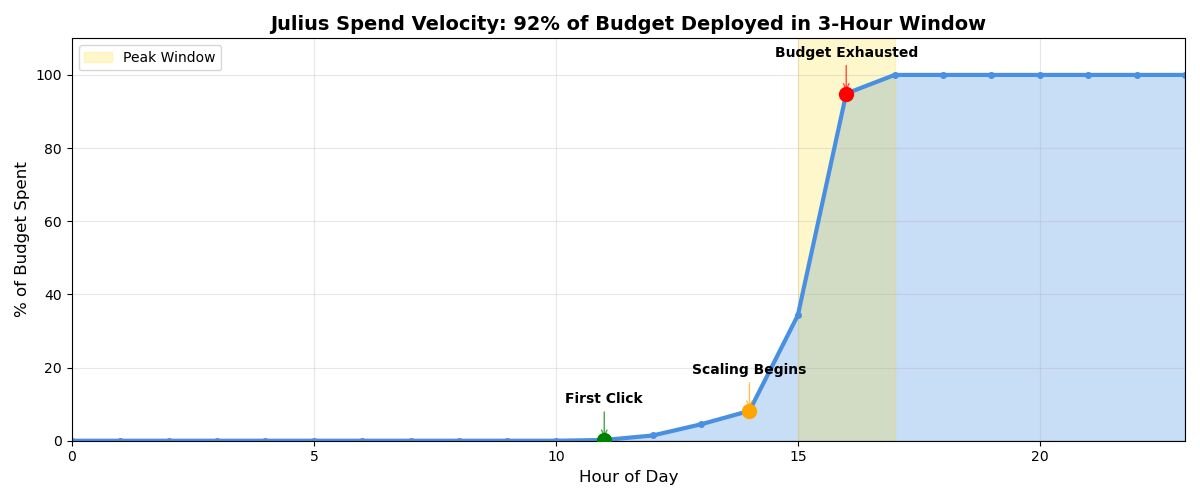
How It's Possible
Recently at Julius, we released 3 new features that allow people to do some pretty cool stuff. Allow me tell you about them:
1) We released Julius Notebooks
Julius Notebooks (like a Jupyter Notebook) allow you to set up reproducible and easily sharable analyses with your team. You can prompt Julius to do stuff at different steps, rather than run code if you wish.
2) We released Scheduled Runs
Within Julius Notebooks, we also recently released Scheduled Runs. This allows you to schedule a recurring interval which you want your analysis to run. This can be configured to send an email or slack update each time it completes, freeing you from manual updates.
3) We released our Google Ads connector AND gave Julius write access to Google Ads
You can connect your Google Ads account, but (as a safety measure) it won't be able to edit anything by default. For the daring among you, you can actually go into settings and give Julius access to edit your Google Ads. This means not only can Julius take a look at your ad campaigns and give you an analysis, it can actually use that to make decisions about how to adjust keywords and reallocate spend.
These three features combined allow you to do something amazing. You can set up a Julius Notebook, that runs on a daily basis and analyzes and adjusts your Google Ads: a fully functioning, data driven, marketing manager. Say goodbye to your agency.
So below, I'll show you how I set this up to do our ad campaign, and how you can set this up for yourself.
To start, I made a new Julius Notebook (you can use this template here to get started). Then as the first step, I hooked up our Google Ads account as the data source. The screenshots below will show you the buttons to click to do this.
Note: You might have to go into connector settings and do some initial setup for Google Ads, if this is your first time making the connection.
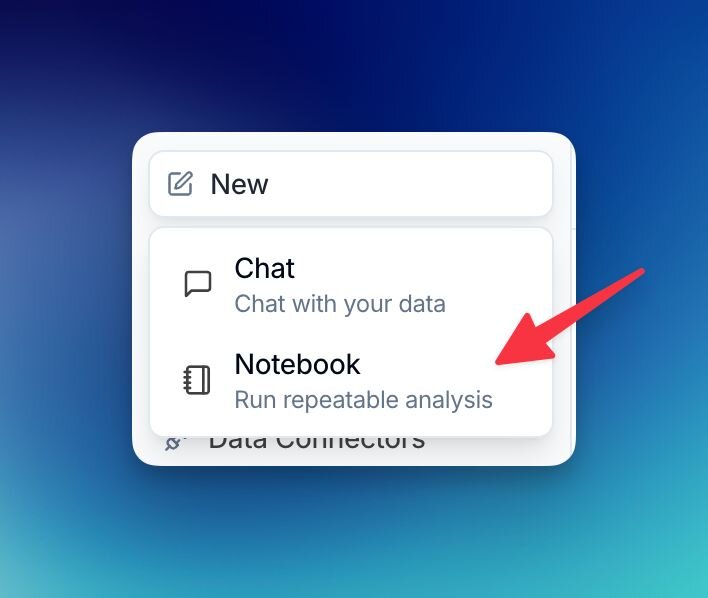
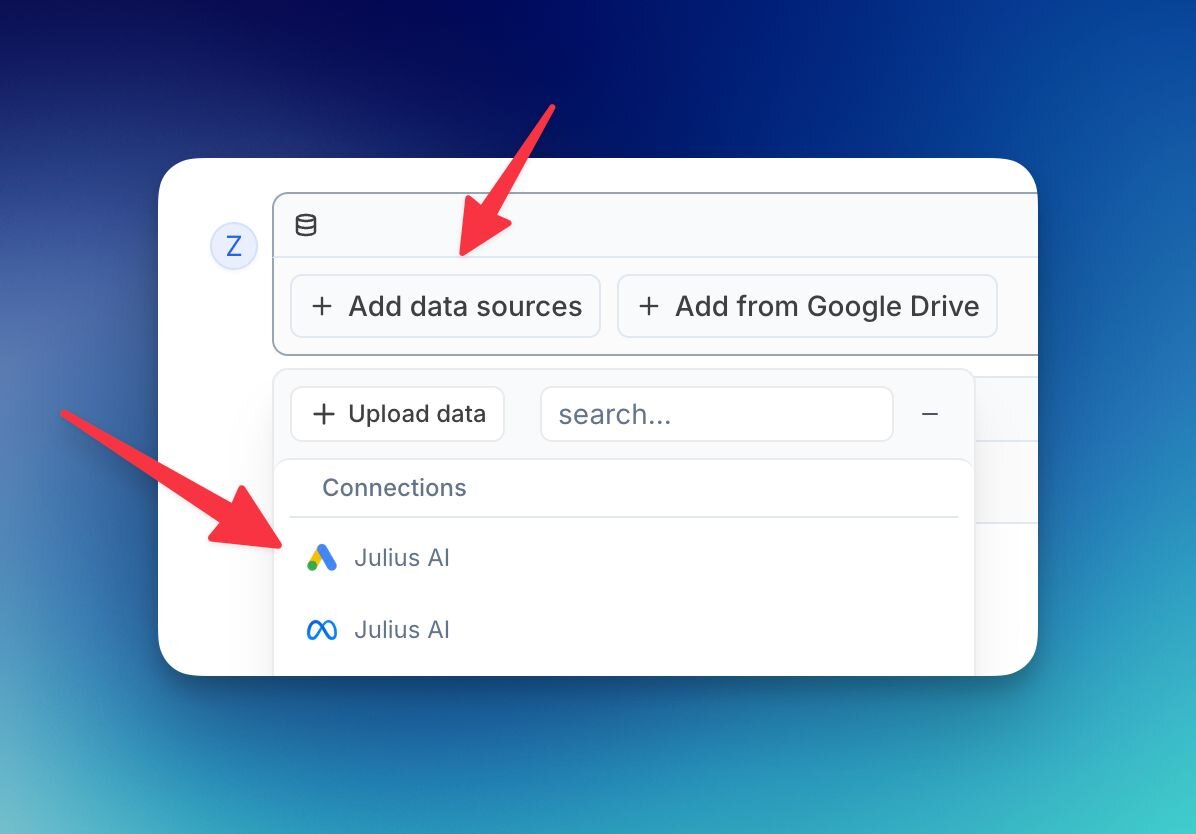
Then if you're crazy like me and you want Julius to literally run your ad campaign for you (not simply analyze), you need to give Julius write access to Google Ads. Under your user settings in the top right, navigate to the data connectors tab and enable write access to Google Ads.
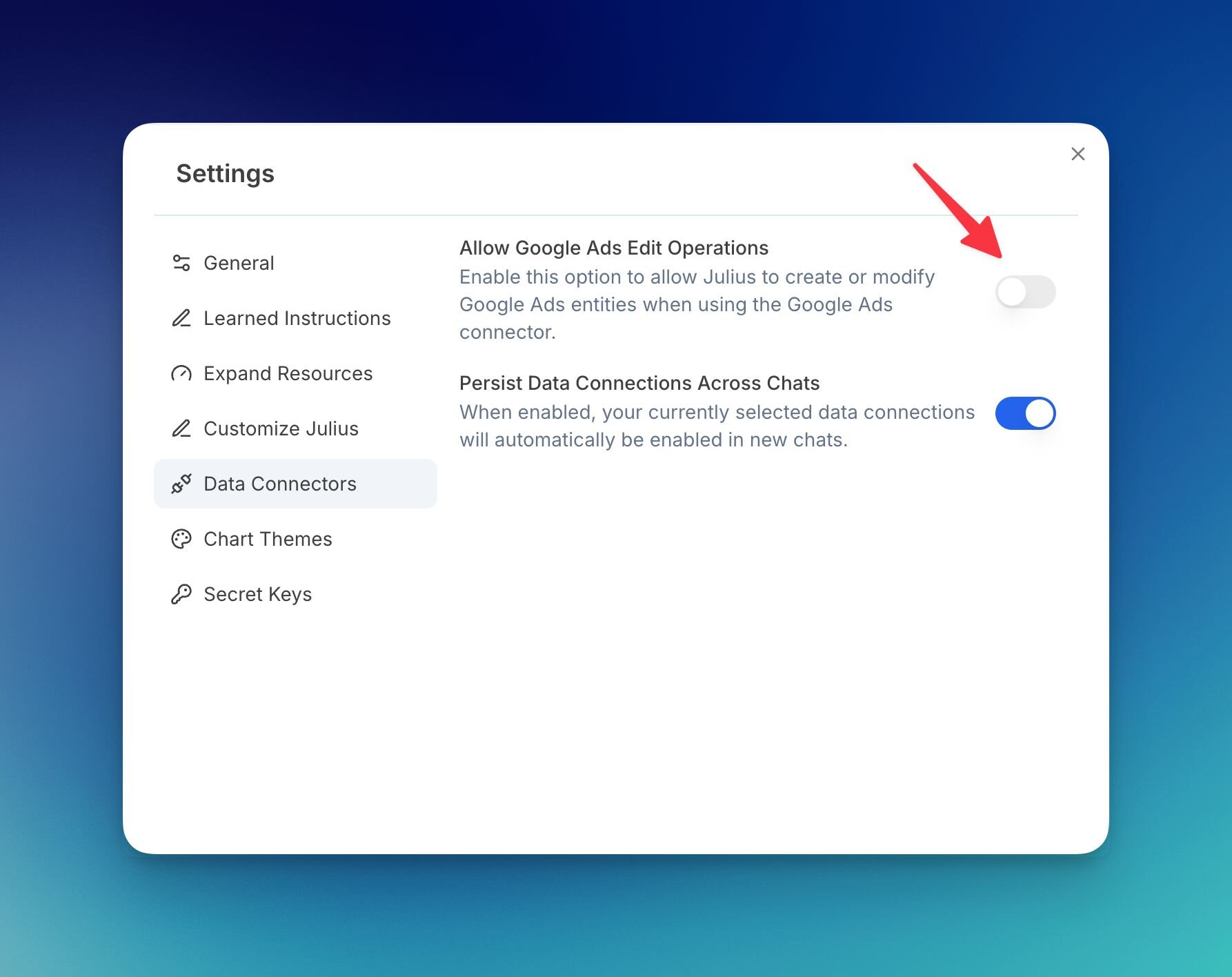
I started by testing the waters, just asking Julius to give us a rundown of our existing Google Ads campaigns and how they've performed. I wanted to be absolutely sure I forced a pure analysis step.
I can't share the results of the analysis, but I can show you the simple prompt I ran to get it (that you can use for your data).
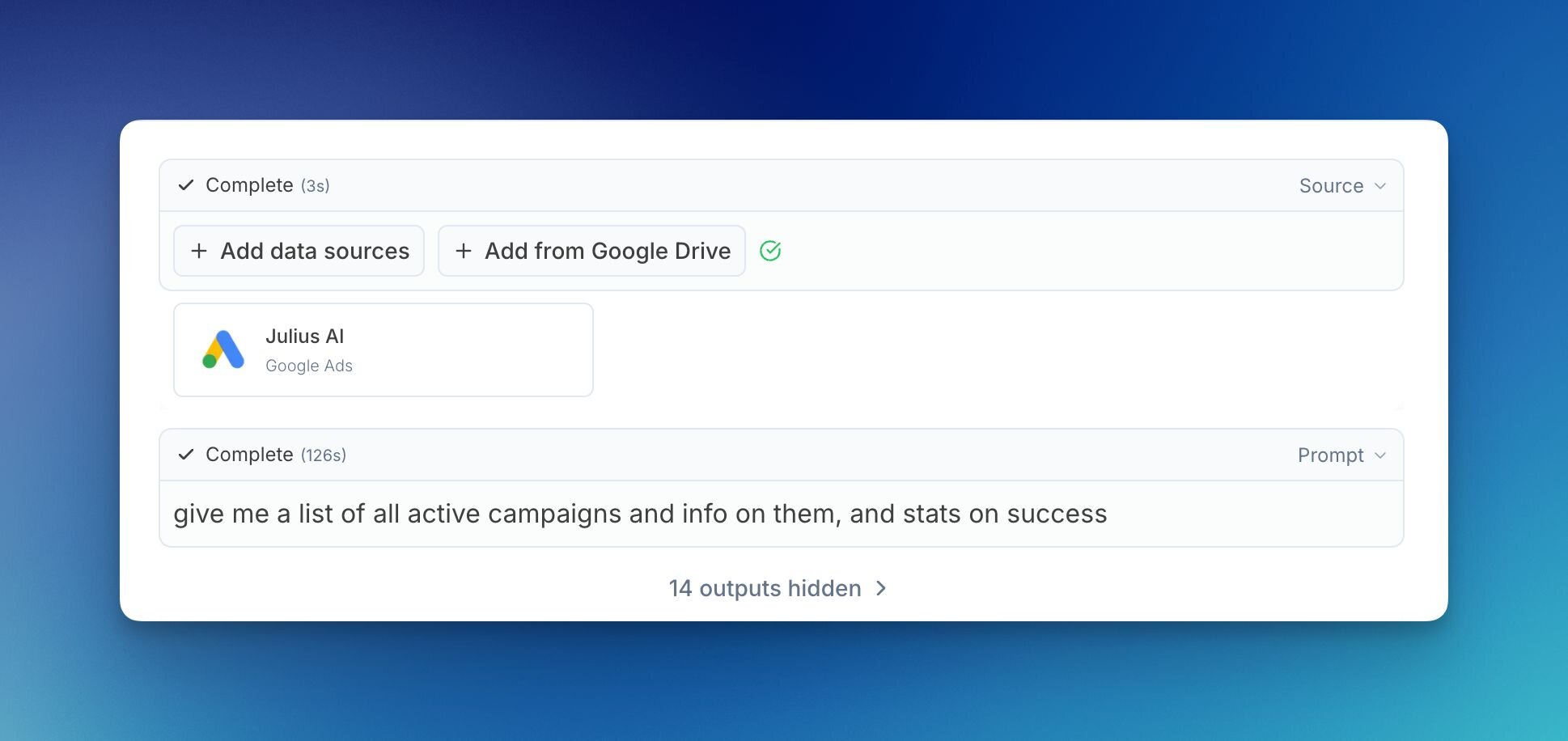
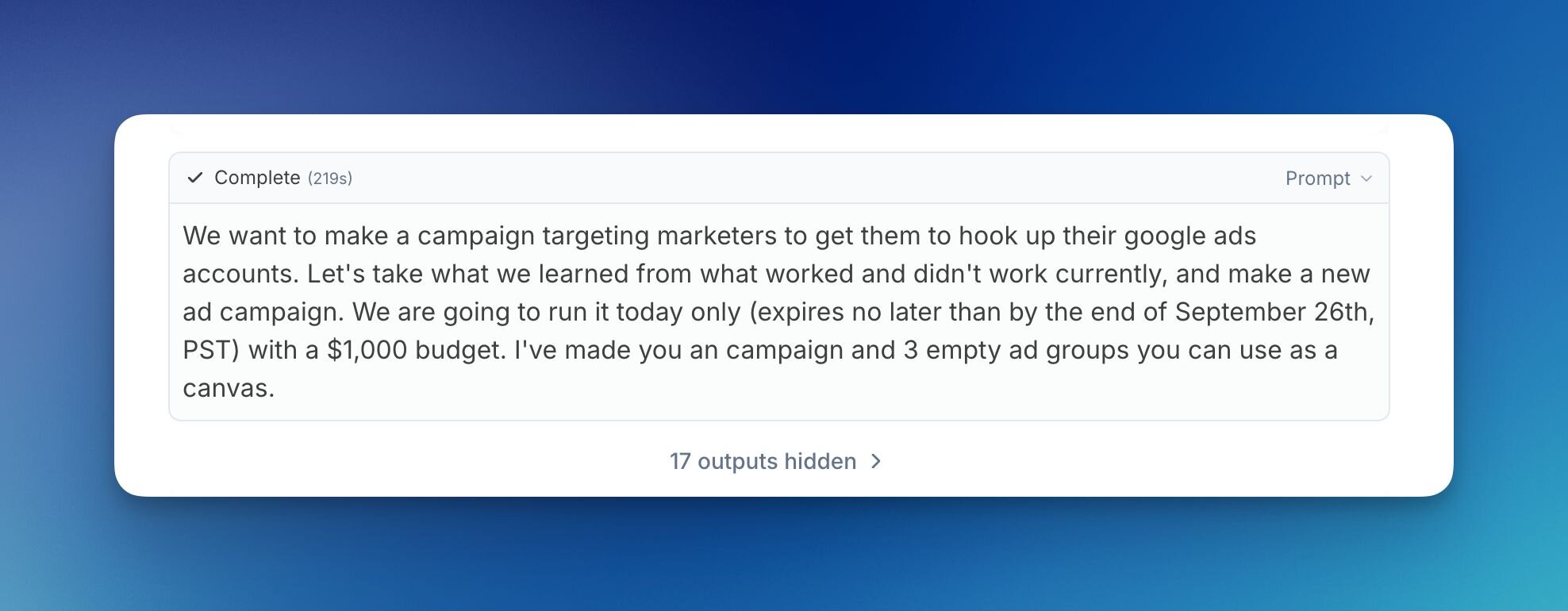
If this was a long running campaign, I could have optimized this into something that could run every day, but because in this case we were doing a single day experiment, I've set it up like I did. After 4 hours, I prompted it to analyze its performance and make some adjustments. But that is all that I did.
If you'd like to get started quickly yourself, here's a notebook template you can use to get started analyzing your ad campaign.

TL;DR
We handed our AI agent, Julius, full control of a $1,000 Google Ads budget for one day.
It spent the money exactly to the cap, explored for about 10 hours, and then bet big by pushing ~90% of the budget into a two-hour window (3–5 pm PT).
The result was 5× more clicks per active hour than our normal campaign, but at about 2× the cost per click. Fascinating strategy, not yet the most efficient.
If we’d run it longer and optimized for conversions instead of raw clicks, we think the results would look very different.
